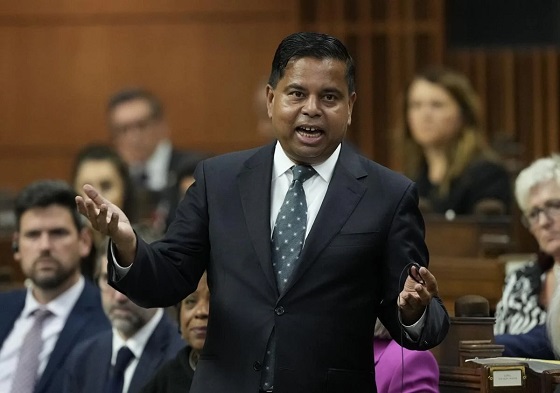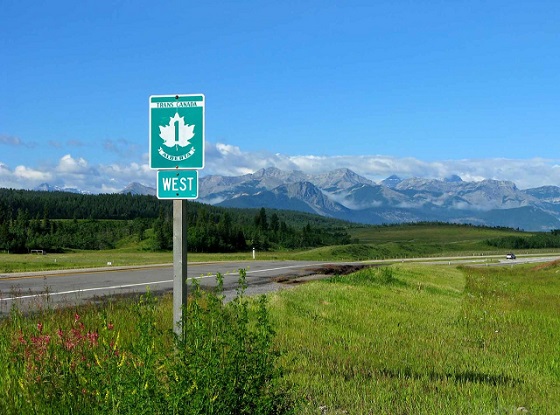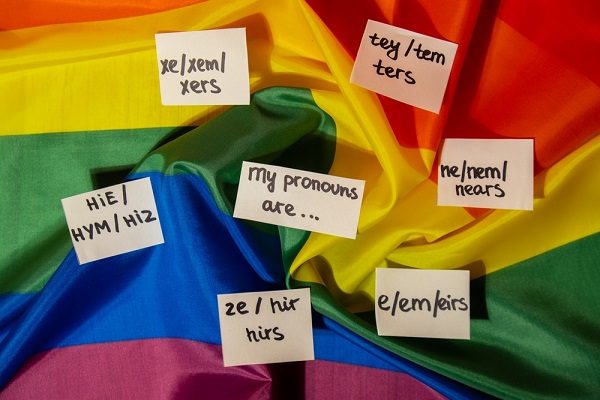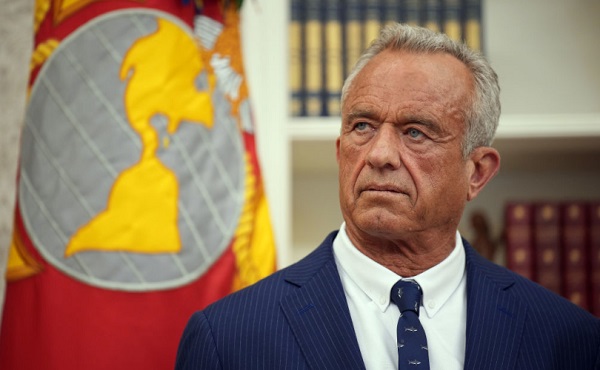Business
Public Safety Minister admits gun buyback program is waste of money and resources – 742,000,000 projected cost to taxpayers

From Conservative Party Communications
A decade of reckless Liberal soft-on-crime, bail-not-jail policies have left a majority of Canadians feeling unsafe in their own neighbourhoods with a justice system that works against them. Violent crime has increased by 55%, gun crime 130% and extortion 330%.
Instead of repealing their hug-a-thug laws that put criminals first and victims last, Mark Carney’s hapless Minister of Public Safety is pushing a failed gun buyback program that he admits is a waste of money that will do nothing to keep Canadians safe.
Yesterday, in a leaked recording, Public Safety Minister Gary Anandasangaree was caught telling the truth about the failed Liberal buyback boondoggle while breaching basic ethics:
The program is all for votes
“Quebec is in a different place than other parts of Canada, right? And this is something that is very much a big, big, big deal for many of the Quebec electorate that voted for us, right? And that’s one of the major things. I think it’s, I saw, I’m sure you’ve seen these articles where people said, you know, this is one of the things we should not execute, like as a change from Trudeau’s policies, but we’ve made the decision to go ahead.”
Carney forced me
“But this is the mandate I was given by Carney to complete this…if I were to redo this from scratch, I would have a very different process.”
I’ll pay you back
“In your case, what are your losses? You tell me, I’ll personally offset you.”
Ignore the law, I’ll bail you out
“I’m not going to send the police to you…I doubt (the program) is going to go that far…I will come and bail you out if that happens, I will. You call me.”
Mark Carney has admitted “the vast majority of firearms, illegal firearms, firearms used in crime come across our border,” yet the Liberals are continuing with a confiscation program that goes after legal, trained, tested and licensed Canadian firearms owners. That includes confiscating hunting rifles from Indigenous people exercising their treaty rights to hunt.
Anandasangaree’s buyback boondoggle is conservatively estimated to cost $742 million for a program the Minister himself admits is a waste of money and resources, pursued purely for political gain. $742 million represents 5,000 RCMP officers, 300 port scanners or 37,000 addiction treatment beds. That’s money that could go to restoring safety on our streets, ending gun smuggling and bringing our loved ones home drug-free.
Offering to bail out his tenant from criminal charges is not the first time Anandasangaree has been accused of not being impartial while upholding the law as Minister. After it was discovered he implored CBSA to overturn an immigration decision despite national security concerns, he was forced to recuse himself from files involving terrorist groups “to ensure that there is no perception of any conflict”. The Minister claimed he was simply helping a constituent, but that was also revealed to be a lie.
All of these failures stack on top of an abysmal record. The Minister has failed to ban the extortionist Bishnoi Gang and lost almost 600 non-citizen criminals in Canada, 70% of whom committed serious crimes such as sexual assault. In the pursuit of the buyback boondoggle, he’s also breaking his promise to add 1,000 RCMP and 1,000 CBSA officers.
These failures have real-world consequences: Canadians no longer feel safe in their own homes, and with good reason. This cannot go on. Mark Carney appointed Anandasangaree as Public Safety Minister. He must own up to his terrible judgment, hold his Minister accountable and fire Minister Anandasangaree.
Business
What Pelosi “earned” after 37 years in power will shock you

Nancy Pelosi isn’t just walking away from Congress — she’s cashing out of one of the most profitable careers ever built inside it. According to an investigation by the New York Post, the former House Speaker and her husband, venture capitalist Paul Pelosi, turned a modest stock portfolio worth under $800,000 into at least $130 million over her 37 years in office — a staggering 16,900% return that would make even Wall Street’s best blush.
The 85-year-old California Democrat — hailed as the first woman to wield the Speaker’s gavel and infamous for her uncanny market timing — announced this week she will retire when her term ends in January 2027. The Post reported that when Pelosi first entered Congress in 1987, her financial disclosure showed holdings in just a dozen stocks, including Citibank, worth between $610,000 and $785,000. Today, the Pelosis’ net worth is estimated around $280 million — built on trades that have consistently outperformed the Dow, the S&P 500, and even top hedge funds.
The Post found that while the Dow rose roughly 2,300% over those decades, the Pelosis’ reported returns soared nearly seven times higher, averaging 14.5% a year — double the long-term market average. In 2024 alone, their portfolio reportedly gained 54%, more than twice the S&P’s 25% and better than every major hedge fund tracked by Bloomberg.
Pelosi’s latest financial disclosure shows holdings in some two dozen individual stocks, including millions invested in Apple, Nvidia, Salesforce, Netflix, and Palo Alto Networks. Apple remains their single largest position, valued between $25 million and $50 million. The couple also owns a Napa Valley winery worth up to $25 million, a Bay Area restaurant, commercial real estate, and a political data and consulting firm. Their home in San Francisco’s Pacific Heights is valued around $8.7 million, and they maintain a Georgetown townhouse bought in 1999 for $650,000.
The report comes as bipartisan calls grow to ban lawmakers and their spouses from trading individual stocks — a move critics say is long overdue. “What I’ll miss most is how she trades,” said Dan Weiskopf, portfolio manager of an ETF that tracks congressional investments known as “NANC.” He described Pelosi’s trading as “high conviction and aggressive,” noting her frequent use of leveraged options trades. “You only do that if you’ve got confidence — or information,” Weiskopf told the Post.
Among her most striking trades was a late-2023 move that allowed the Pelosis to buy 50,000 shares of Nvidia at just $12 each — less than a tenth of the market price. The $2.4 million investment is now worth more than $7 million. “She’s buying deep in the money and putting up a lot of money doing it,” Weiskopf said. “We don’t see a lot of flip-flopping on her trading activity.”
Republicans blasted Pelosi’s record as proof of Washington’s double standard. “Nancy Pelosi’s true legacy is becoming the most successful insider trader in American history,” said RNC spokesperson Kiersten Pels. “If anyone else had turned $785,000 into $133 million with better returns than Warren Buffett, they’d be retiring behind bars.”
Business
Ottawa should stop using misleading debt measure to justify deficits

From the Fraser Institute
By Jake Fuss and Grady Munro
Based on the rhetoric, the Carney government’s first budget was a “transformative” new plan that will meet and overcome the “generational” challenges facing Canada. Of course, in reality this budget is nothing new, and delivers the same approach to fiscal and economic policy that has been tried and failed for the last decade.
First, let’s dispel the idea that the Carney government plans to manage its finances any differently than its predecessor. According to the budget, the Carney government plans to spend more, borrow more, and accumulate more debt than the Trudeau government had planned. Keep in mind, the Trudeau government was known for its recklessly high spending, borrowing and debt accumulation.
While the Carney government has tried to use different rhetoric and a new accounting framework to obscure this continued fiscal mismanagement, it’s also relied on an overused and misleading talking point about Canada’s debt as justification for higher spending and continued deficits. The talking point goes something like, “Canada has the lowest net debt-to-GDP ratio in the G7” and this “strong fiscal position” gives the government the “space” to spend more and run larger deficits.
Technically, the government is correct—Canada’s net debt (total debt minus financial assets) is the lowest among G7 countries (which include France, Germany, Italy, Japan, the United Kingdom and the United States) when measured as a share of the overall economy (GDP). The latest estimates put Canada’s net debt at 13 per cent of GDP, while net debt in the next lowest country (Germany) is 49 per cent of GDP.
But here’s the problem. This measure assumes Canada can use all of its financial assets to offset debt—which is not the case.
When economists measure Canada’s net debt, they include the assets of the Canada Pension Plan (CPP) and the Quebec Pension Plan (QPP), which were valued at a combined $890 billion as of mid-2025. But obviously Canada cannot use CPP and QPP assets to pay off government debt without compromising the benefits of current and future pensioners. And we’re one of the only industrialized countries where pension assets are accounted in such a way that it reduces net debt. Simply put, by falsely assuming CPP and QPP assets could pay off debt, Canada appears to have a stronger fiscal position than is actually the case.
A more accurate measure of Canada’s indebtedness is to look at the total level of debt.
Based on the latest estimates, Canada’s total debt (as a share of the economy) ranked 5th-highest among G7 countries at 113 per cent of GDP. That’s higher than the total debt burden in the U.K. (103 per cent) and Germany (64 per cent), and close behind France (117 per cent). And over the last decade Canada’s total debt burden has grown faster than any other G7 country, rising by 25 percentage points. Next closest, France, grew by 17 percentage points. Keep in mind, G7 countries are already among the most indebted, and continue to take on some of the most debt, in the industrialized world.
In other words, looking at Canada’s total debt burden reveals a much weaker fiscal position than the government claims, and one that will likely only get worse under the Carney government.
Prior to the budget, Prime Minister Mark Carney promised Canadians he will “always be straight about the challenges we face and the choices that we must make.” If he wants to keep that promise, his government must stop using a misleading measure of Canada’s indebtedness to justify high spending and persistent deficits.
-

 Alberta2 days ago
Alberta2 days agoTell the Province what you think about 120 km/h speed limit on divided highways
-

 Energy17 hours ago
Energy17 hours agoThawing the freeze on oil and gas development in Treaty 8 territory
-

 Alberta2 days ago
Alberta2 days agoAlberta’s number of inactive wells trending downward
-

 National1 day ago
National1 day agoNew Canadian bill would punish those who deny residential indigenous schools deaths claims
-

 Business2 days ago
Business2 days agoBill Gates Gets Mugged By Reality
-

 Business17 hours ago
Business17 hours agoWhat Pelosi “earned” after 37 years in power will shock you
-

 Censorship Industrial Complex2 days ago
Censorship Industrial Complex2 days agoSchool Cannot Force Students To Use Preferred Pronouns, US Federal Court Rules
-

 Health1 day ago
Health1 day agoRFK Jr. urges global health authorities to remove mercury from all vaccines






